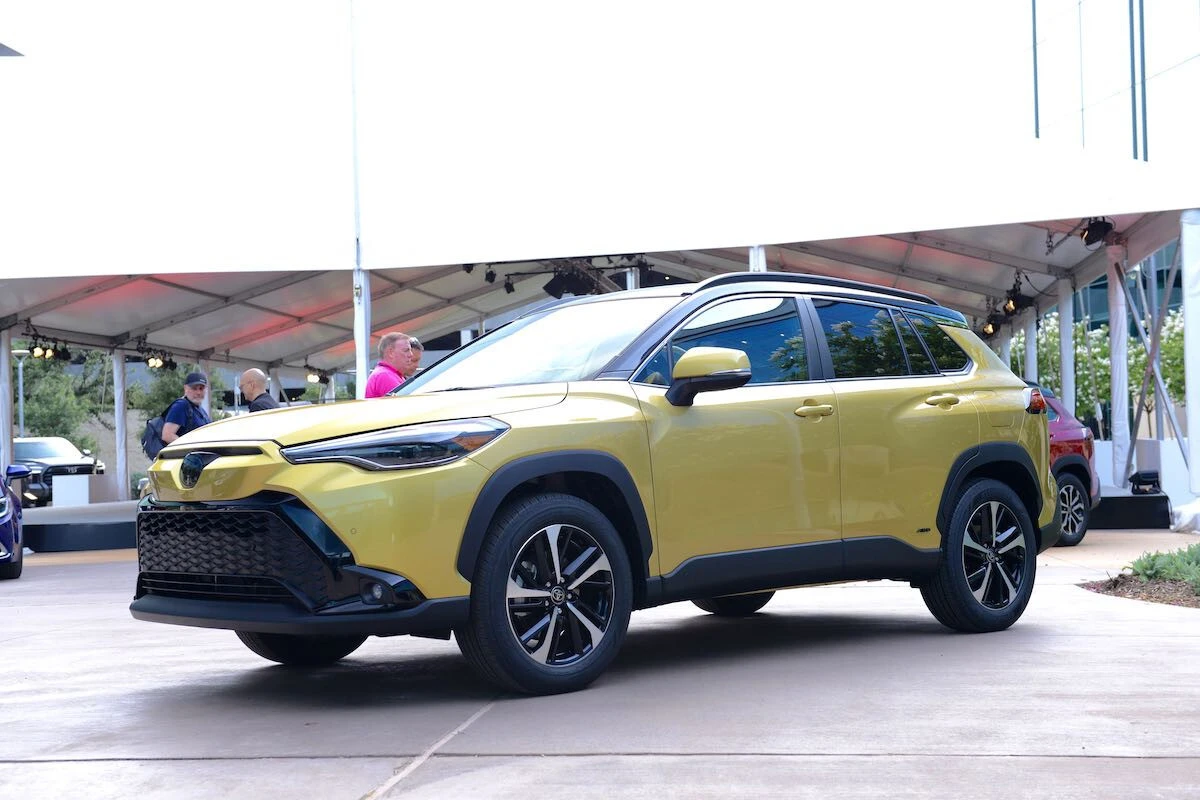Toyota Corolla Cross: Toyota intends to increase the number of SUVs available in India. The Japanese giant finally seems to be putting its shoulder to the wheel when it comes to India. Currently in the process of evaluating a larger SUV based on the Corolla Cross to compete with the likes of the Hyundai Alcazar and likely the Hyundai Tucson and Jeep Meridian, as well as attract the Hyundai Creta buyers looking for an upgrade.
How come Toyota needs a bigger Corolla Cross, though? The size plays a role in the solution. The Hyryder or Creta are about the same size as the Corolla Cross that is sold overseas. Not only is the Corolla Cross’ overall length comparable to these models, but so is its 2,640mm wheelbase. Additionally, it will be up against SUVs in a higher class.
Changes in Dimensions
The Corolla Cross’s shared platform with the Innova Hycross allows it to share parts and powertrains and be produced on the same line, making it a competitive alternative. The platform, of course, is the TNGA-C from Toyota (or GA-C). Toyota cannot use the wheelbase from the Hycross because it is 2,850 mm too long and 2,640 mm too far from the wheelbase of the Corolla Cross.
| Front Headroom | 38.6 in |
| Rear Headroom | 39.0 in |
| Front Legroom | 42.9 in |
| Rear Legroom | 32.0 in |
| Front Shoulder Room | 52.7 in |
There is, however, obviously room for growth. The wheelbase will likely increase by about 150mm, comparable to the difference between, say, the Creta and Alcazar. Toyota should have enough money as a result to add a third row and two more seats. There isn’t a three-row SUV this size made by Toyota right now.
Performance
| Engine Name | 4-Cyl 2.0 Liter |
| Trim | L FWD |
| Horsepower | 169@6,600 |
| Torque | 151@4,400 |
| Number Of Cylinders | 4 |
Electrically operated tailgate
Toyota is probably going to use floor-folding seats, just like on the Hycross, and the lengthened Corolla Cross is probably also going to have an electrically operated tailgate. Naturally, the new SUV will require longer rear doors to facilitate simple access to the third row. The SUV’s “C” and “D” pillars are probably going to change in addition to the new rear doors. A more “open” design with lots of glass and a slimmer “D” pillar for the rear should improve third-row visibility.
From Toyota’s GA-C platform
In addition, the GA-C platform from Toyota is well suited for the job. The GA-C platform is well known for having a very rigid underbody that makes use of cutting-edge methods to fortify joints in critical regions of the monocoque. This not only stiffens the long-wheelbase car but is also likely to reduce weight since no additional strengthening material is required. Toyota will even have the option of using either a more cost-effective torsion beam suspension or an all-independent multi-link suspension; low-friction dampers improve comfort.
With a strong powertrain
Expect this larger and heavier version to be powered by the same set of engines that are found in the Innova Hycross, despite the Corolla Cross typically being sold with a 1.8-liter petrol engine. Expect the 2.0-liter M20A-FKS gasoline and, in particular, the powerful 2.0-liter M20A-FXS hybrid, which has 184 horsepower and a respectable 206 Nm of electric boost. In actuality, the potent hybrid powertrain is what should give this SUV an efficiency edge over its competitors, including diesels. However, diesel enthusiasts are likely to continue to miss the powerful midrange that a modern direct injection turbo petrol offers.
In India, Toyota SUVs have consistently received favourable reviews. The company has always been well-regarded due to its significant market share and reputation for producing some of the most capable SUVs. Also noteworthy are Toyota’s unfailing dependability and the glacial rate at which its SUVs age. Yes, an SUV based on the Corolla Cross will cost a lot of money and likely be a step above competitors, but you can count on it to be very popular.
Keep watching our YouTube Channel ‘DNP INDIA’. Also, please subscribe and follow us on FACEBOOK, INSTAGRAM, and TWITTER.












